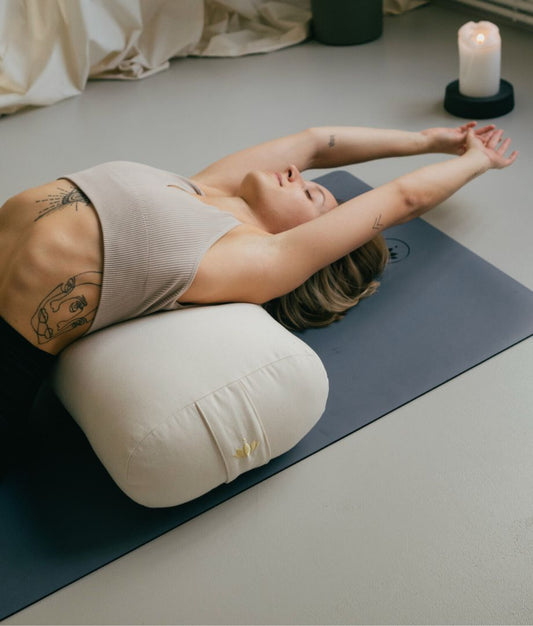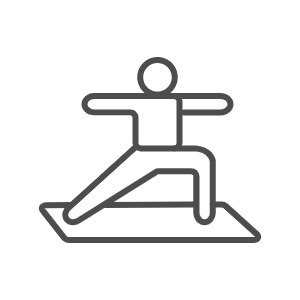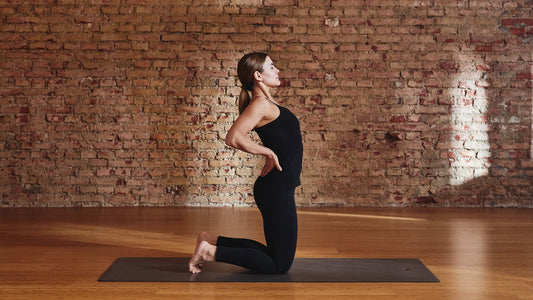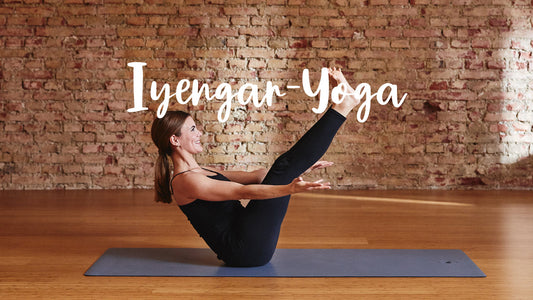
Set-Offers
Save when you buy a set
Shopping cart
Your shopping basket is empty
Yoga

Meditation
Yoga Sets

| Meditation
Meditation, isn't that the thing where a Buddhist monk sits lonely and still somewhere? Yes and no, because various meditation techniques have their roots in Zen Buddhism . But there are many different ways to reach the meditative state and everyone can experience the effects of meditation ! Here you can read what meditation techniques there are , how you can learn them and what the difference is between active and passive meditation .

The following list only includes passive meditation techniques, as they are, to a certain extent, among the classics. Of course, later you will also learn all about active techniques such as Kundalini meditation or OSHO meditation .
In mantra meditation, you concentrate not only on your breath but also on a specific mantra and harmonize both. The classic mantra is "Om" , but basically this meditation works just as well with a self-chosen mantra.
So you synchronize mantra and breath by saying the mantra while inhaling and exhaling , aloud or in your head. It's about not actively thinking, but instead finding peace. It's normal for thoughts to spin wildly. Just steer them back to the mantra again and again.
The energy centers in the body are called chakras. There are a total of 7 main chakras and this meditation is about sending energy into the individual energy points through breathing. Starting from the stomach, you consciously move the energy from the head towards the stomach and, when exhaling, back in the other direction.
Once you have sent energy to all the chakras, you can reduce your breathing so that you take in and exhale very little air. Then you draw your attention exactly to the point where you feel the energy the most.
In principle, it is not primarily about "breathing on" individual points. Rather, the conscious control of your consciousness should be the focus. If it helps, you can also imagine the air you breathe as light traveling through your body or use a mantra to help you.
The name says it all: you find one thing to focus on throughout the meditation . This can be a sound like a ticking clock, an image in your mind's eye or a memory, or a point in the distance that you first look at intensely and then close your eyes. As soon as your mind wanders, you return to your focus point.
Sitting still with closed eyes is not easy for everyone. Many people find balance by meditating still, but others find it helpful to move. If you belong to the second group, active meditation might be of interest to you.
The Indian mystic Osho invented what he called dynamic meditation, believing that today's society is too restless to meditate in complete stillness . Body movements are therefore an essential part of this meditation technique. Dynamic meditation according to OSHO lasts about an hour longer than passive meditation and has 6 phases :
The OSHO meditation is intended to release blocked feelings and help to achieve more balance. For most of us, however, it might take some effort to move through a room seemingly randomly and loudly. So for beginners it is certainly not a bad idea to start with dynamic meditation in a group and thereby break down inhibitions.
Another active technique is Kundalini meditation , also known as shaking meditation. It consists of 4 phases :
Incidentally, the following applies to all types of active meditation: any type of movement is allowed . There is definitely no right or wrong with these meditation techniques!
Passive meditation techniques are also known as silent meditation. Because this is not about showing feelings to the outside, but about directing the focus only on the breath and the world of thoughts . You direct your attention and observe yourself while sitting still and motionless. Of course, you can also meditate passively while standing or lying down.
If you want to learn meditation, you only have to internalize one rule : There is no ideal meditation and no specific goal . You don't have to meet any specific expectations when meditating, including your own. Meditation is not a compulsory exercise, but rather a way of life: You want to learn to be more aware of yourself and your environment.
You can achieve this goal by reciting a mantra as well as by movements that express your feelings and help you to let go. Meditation beginners primarily need to learn routine and patience : always meditate at the same time and in the same place and try out different techniques. Don't be unsettled if the meditation doesn't want to go at all on some days. As long as you try again the next day, you've already won and can keep learning!

Unfortunately, stress does not stop at anyone in the hectic everyday life. Seemingly endless to-do lists, worries and problems haunt us until the e...
Continue reading
Iyengar Yoga bears this name thanks to its inventor, BKS Iyengar. In the Iyengar Yoga practice you will find typical elements of Hatha Yoga, so th...
Continue reading
There are no comments yet. Be the first to leave a comment!